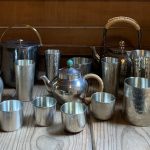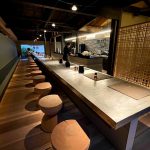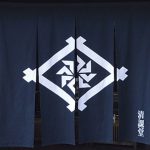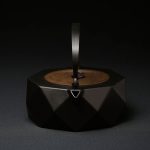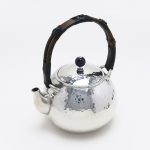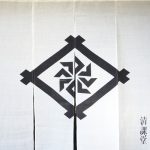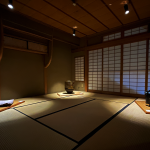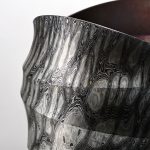(English follows Japanese)
年が明けて早々、一週間がかりで創作に取り組みました。
昔から日本の伝統的なモチーフで、「無病息災」。
手に乗る程度の、煎茶・玉露用の茶入れです。内蓋の付いた仕様になっています。
材質は錫、容量にして茶葉 50gほど入る大きさです。
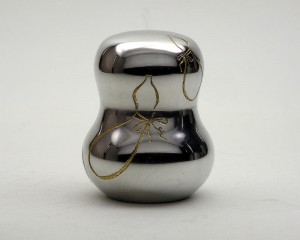
瓢箪(ひょうたん)形の茶入れに、5つの瓢箪を片切彫り技法を用いて現しました。「片切彫り」という彫金技法は、書や水墨画のような筆遣いを表現できる高度なものです。古典を題材にしたものにはよく用いられます。
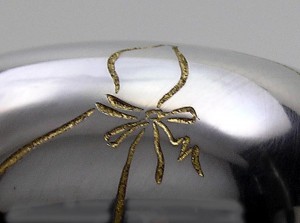
単に彫りを施しただけでなく、彫り削り取られた窪みに純金箔を押します。
*金属箔は「張る」のではなく、「押す」と言います
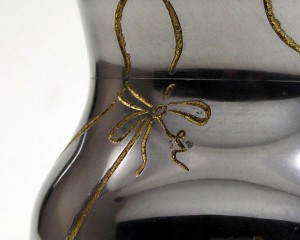
箔が押され、際立った部分をよくよく見ていただくと判りますが、それぞれ瓢箪のくびれに巻かれた「紐」で、ひらがなを1字表しています。「そ」、「く」、「さ」、「い」。「六瓢」で「そ・く・さ・い」の意味を表します。
お買い求めについて
京都寺町二条の店舗の他、オンラインストアからもご購入いただけます。
※SOLD OUT こちらの製品は完売いたしました。
清課堂オンラインストアでは、この他各種新作も取扱いしております。
Felicitous “Hyotan”(Gourd) Tea Caddy
Soon after the start of the year, I spent 1 week on a new project.
“Six gourds” are a very traditional motif in Japan that symbolizes health and longevity.
This tea caddy is for sencha or gyokuro tea, and just about fits in one’s palm. It comes with an insidelid. The material is pewter, and can contain about 50grams of gyokuro tea.
On this gourd-shaped tea caddy, 5 gourds are depicted using the katakiri engraving technique. metal engraving technique called “Katakiri” engraving allows for an expression very much like calligraphy, and is highly difficult. The technique is often used for objects based on classical material.
It is not simply engraved, but the inside of the engraved lines are gold leafed.
If you look closely at the gilded areas, you will notice that the string tied around each gourd is representing one hiragana alphabet: “そ”(so), “く”(ku), “さ”(sa), “い”(i).
It represents the word “Sokusai” meaning “six gourds.”



